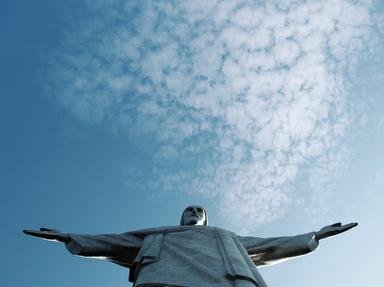Quiz Answer Key and Fun Facts
1. Although the Portuguese had been given the rights to all of Brazil in the 1494 Treaty of Tordesillas, which nation occupied an island off the coast of Rio de Janeiro until 1567?
2. In colonial Rio de Janeiro times, what were sesmarias?
3. Which historic building in Rio de Janeiro began construction in 1738 and served as the headquarters for the colonial governors of Brazil and later as a royal palace for the Portuguese royal family?
4. Brazil's economy slumped at the end of the 18th century, even as Rio de Janeiro was expanding and modernizing. The reason for the decline was that the Spanish territories in the New World were producing more sugar faster than Rio de Janeiro could. However, the economy jumped after the turn of the century when many of Rio's sugar plantations started growing what crop?
5. The famous journalist Joaquim Goncalves Ledo was a crucial figure in the struggle for Brazilian independence, which was achieved in 1822. For what form of government did Ledo advocate for?
6. Thirty people died during the Vaccine Revolt of 1904. The Vaccine Revolt was a response to the government's actions forcing mandatory vaccinations against which disease?
7. Heitor da Silva Costa was a famous Brazilian engineer from Rio de Janeiro who designed which famous monument, completed in 1931?
8. When Rio de Janeiro was chosen to host the FIFA World Cup in 1950, the famous Maracana Stadium was built. In that year's championship game, Brazil faced Uruguay. What was the outcome?
9. Rio's high crime rate was on display internationally in the 1990s. On July 23, 1993, on of the most famous instances of violence in the city occurred when eight males, seven of whom were teenagers, were brutally murdered outside of which building?
10. In 2009, Rio de Janeiro was selected to host the 2016 Summer Olympic Games. Which of the following plagued the city since its choice as venue for the Games?
Source: Author
Joepetz
This quiz was reviewed by FunTrivia editor
bloomsby before going online.
Any errors found in FunTrivia content are routinely corrected through our feedback system.

